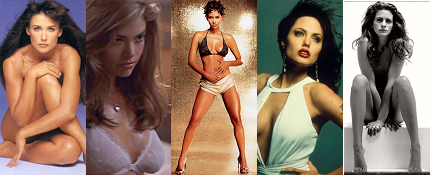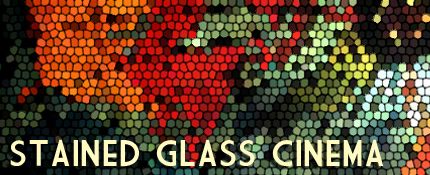Much thanks to DeeDee for her big, big support of this blog-a-thon.
Stay tuned throughout September for nuttiness and zaniness of all varieties - click here for the full lineup, and click here for prior entries (which won't do you much good today, what with this being the first - madness!).

Czech Hitchcock - The Birds + Psycho Poster Combination...
Czech poster for a double bill of the Alfred Hitchcock films "The Birds" and "Psycho".
www.hitchcockwiki.com/blog/?p=496
"There's something wonderfully surreal and slightly unsettling about many of the Czech and Polish Hitchcock film posters."
According To Director Alfred Hitchcock...
"Naturally, the knife never touched the body; it was all done in the montage."
Her cross-country flight ultimately leads her to the Bates Motel, managed by the awkward and mild-mannered Norman Bates (Anthony Perkins), a man who submits loyally to the wishes of his mentally-ill, domineering mother. Meanwhile, Marion's boyfriend Sam Loomis (John Gavin) and sister Lila (Vera Miles) set out in pursuit, their search ending – inevitably – at the Bates motel.
The story sporadically shifts from one character to the other; after convincing audiences that Marion Crane is "the wrong man" of so many of his previous pictures, Hitchcock deftly strikes at the heart of their sympathies.
In his early film Sabotage (1936), the director had condemned his own decision to murder a character with whom the viewer had been asked to identify, though here he once again dared to break his own rules, and we've never forgotten it.
Though Psycho received a mixed critical response upon its release, its commercial success was extraordinary, and film-goers lined entire city blocks to experience the director's latest. Conversely, fellow British director Michael Powell's thematically-similar Peeping Tom (1960) had been severely trashed by critics and audiences alike just months earlier, and the career of the beloved filmmaker was, for all practical purposes, left in ruins.
Furthermore, the success of Psycho triggered the emergence of the "slasher" flick, and subsequent years saw a slew of inferior, gory and imaginatively-titled knock-offs, such as Maniac (1963), Paranoia (1963) and Fanatic (1965).
Anthony Perkins plays the role of Norman Bates to quirky perfection, and his character {perhaps modelled from Dennis Weaver's jittery hotel night manager in Touch of Evil (1958) – also starring Janet Leigh} is a man who initially demands our pity and understanding. Even after the atrocity in the shower, Hitchcock, as he also did in Frenzy (1972), builds a suspense sequence around a villain's attempts to conceal the traces of his crime.
Martin Balsam is rarely mentioned when discussing the film, but his characterisation of detective Milton Arbogast is letter-perfect, his shrewd but amenable tone successfully lulling Norman into a false sense of triumph, and yet the audience knows full well that the experienced investigator sees the transparency of his lies.
Despite the prevalence of cultural spoofs and references, Psycho is a thriller that still holds up exceptionally well, even though most viewers are fully-aware of the first major twist. When I first watched the film several years ago, I was completely ignorant of Mother's true identity, and I gasped aloud at the revelation in the fruit cellar, the swinging lightbulb casting a shifting luminance on the rotting corpse of Norma Bates, as Bernard Herrmann's intense, imaginative and very memorable musical score screeches in the background.
(Hitchcock talking to Truffaut about the shower scene in Psycho)
Naturally, the knife never touched the body; it was all done in the montage."
According to Dave (The Creator Of Hitchcock's Website Over There On Wikipedia..."I've spent a good hour or so this evening watching those 8 frames over and over again…
However, when analyzed frame by frame, one of the short segments does appear to show a knife piercing
I've spent a good hour or so this evening watching those 8 frames over and over again…
I think the sequence was achieved quite simply — what we are seeing in the final film is reversed footage. What was actually shot begins with the knife held against the flesh, and then it is pulled away (up and out of frame).
Don't believe me? Then have a play with this web page , which lets you run the sequence both ways at two different speeds.
There are two things, which I think, give it away:
• as the knife is pulled away, it leaves behind a steam of small water droplets
• the motion of the shower spray seems more "natural" in the version where the knife is pulled away
In addition, on the final frame, I think we can see the impression on the skin of where the knife was resting.
Finally, the movement of the midriff again seems more natural when the frames are shown in reverse. As the knife is pulled back,
At first glance, the knife does appear to have cut into the belly. However, I think the darkness we see on the left of the end of the blade is shadow (the light source is away to the left of the frame).
In this image, the edge of the blade is highlighted in green, and it's shadow outlined in blue. What we're seeing is the tip of the blade against the skin.
The 7 previous frames show the knife swooping downwards quickly into the frame. How could they ensure the person holding the knife stopped in time to avoid stabbing
Follow The Link To Find Out Why Hitchcock's "Psycho" Gave Birth To "Slasher" Films.
Tomorrow: Nick puts us all out of our Misery.




























5 people have chosen wisely: on "30 dAyS oF cRaZy: Psycho"
Bonjour! Fletch...
Merci, for posting my reviewer Andrew Katsis' review of Hitchcock's 1960 Classic film...Psycho...I know one thing is true and that is I don't have to add this film to my Christmas list.
Once again,
Merci,for sharing!
DeeDee ;-D
I feel bad for the people who can't go into this and watch it w/o knowing the ending (but that's probably impossible in this day and age).
Bonjour! Fitz...
I totally agree with you, because I knew how the film was going to end,
I also overheard that the lead actress was going to be murdered, but I wasn't aware of the middle part of the film or what led up to the ending.
I guess that what "piqued" my curiosity more than anything what led Perkin's character Bates to commit the dastardly..."deed(s)!"
Therefore, I guess this film now just fits into the category of a film that is meant to be "examined" by film scholars and film students alike.
That is until the next generation and hopefully, they watch it before someone "spill" the beans!
Merci,
DeeDee ;-D
This may be the perfect horror film. I can't wait to see how this looks in 1080p - I'm far too young to have been able to see the 35mm in theaters. I just got "North by Northwest" on Blu-ray and it looks great. The Technicolor really pops!
Bonjour! StuartOhOueue...
I agree with you 100% this film just maybe the "grandfather" or the film that "gave birth" or "spawned" horror films as we know them today.
By the way, I have seen clips of Hitchcock's North by Northwest in HD and the Technicolour is...beautiful!
(Therefore, I can just imagine the picture quality of the film on a Blu-ray disc...Wow!)
Merci, for leaving a comment too!
DeeDee ;-D
Post a Comment